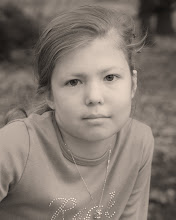Shae Can Hear a Pin Drop!
A bit more has happened since the last post.
On April 28th, Shae was suffering from a cold. Julie brought her to our local clinic to get checked over. She had a sinus infection brought on by the combination of the cold and her PFD. She also had an eye infection probably caused the sinus infection. Afterwards, she also was complaining of tingling and numbness in her cheek. Julie ending up calling the HealthLinks hotline. They felt that Shae should be brought to the emergency right away as they were concerned that she might be at the onset of Bell's Palsy. The ER doctor looked her over and ended up feeling that it was a side effect of the sinus infection. They felt that taking the prescribed medication should eliminate the symptoms (which it did).
To complicate matters, our family doctor apparently decided to give up being a physician and become a counselor. That means that when we need a family doctor more than ever, we are now in a very convoluted process of trying to get a new doctor. One would think that it would be a simple process since we have been patients of the clinic for almost three years but OH NO. We have to complete a New Patient Application, and then meet with the doctor so they decide if they will ACCEPT us as patients. What a bullshit system.
Today, Shae went for her hearing test. She went through a fairly wide variety of tests - from having air shot in her ears, to having loud sounds pumper in her ears, to the old-fashioned "put on the headset and point to the ear when you hear a noise". She was a trooper through the whole process and passed all the tests with flying colors. The nurse told me that Shae can hear better than average. No problem hearing so no excuses for not hearing her parents. =)
Friday is the geneticist appointment, so we will put up another post after that.
Take care all,
Darcy

